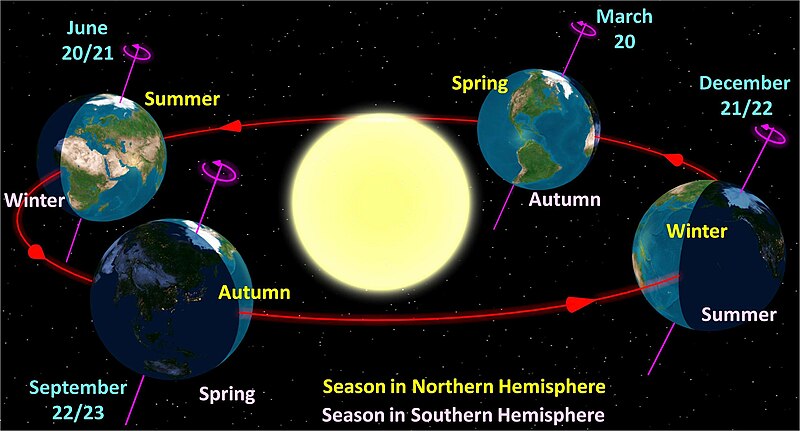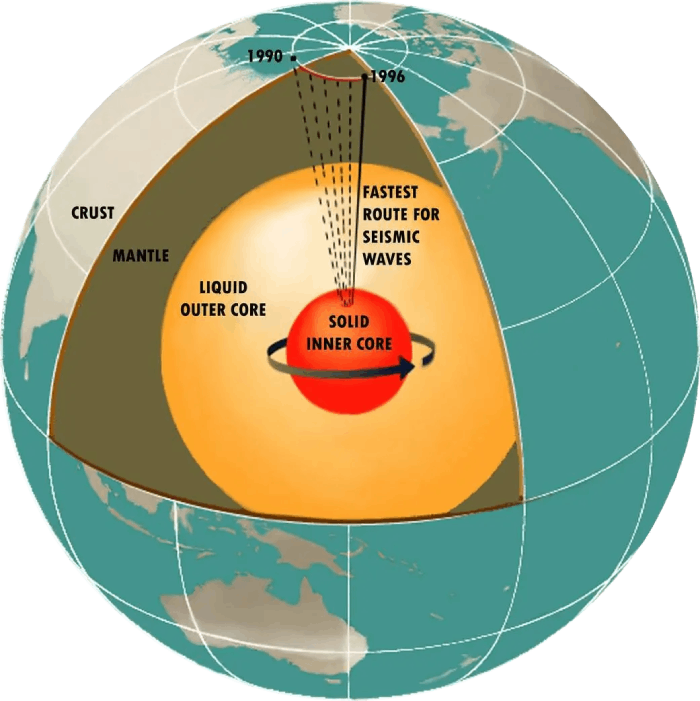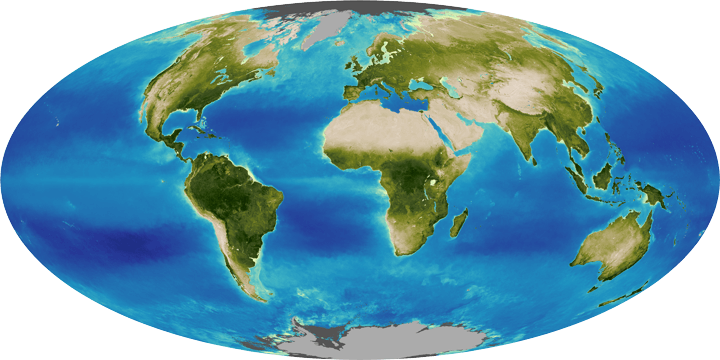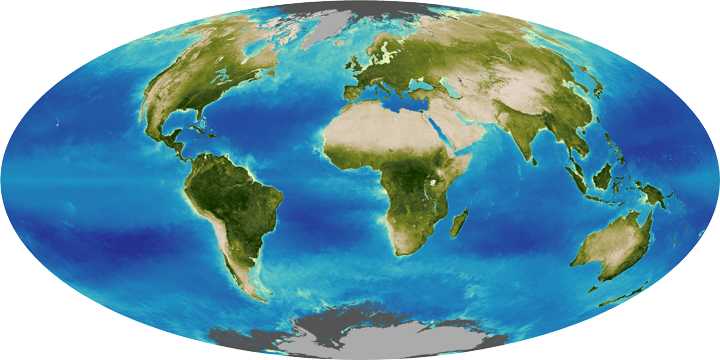Earth, our home planet, is the third from the Sun in our solar system and is the only known planet to support life. It’s located in the habitable zone, also known as the Goldilocks zone, where conditions are just right for the existence of liquid water, a prerequisite for life as we know it.
Earth’s surface appears as a beautiful blend of blues, greens, browns, and whites, reminiscent of the patterns and swirls found on a marble. The dominant blues represent the vast expanses of oceans and seas, while the greens depict the lush vegetation covering the landmasses.
Here are some key aspects of our planet:
Orbital Period and Rotation
Earth orbits the Sun in an elliptical path. This orbit is almost circular but has a slight eccentricity, meaning it’s slightly elongated rather than a perfect circle. The average distance from the Earth to the Sun, is about 93 million miles (150 million kilometers). Earth takes approximately 365.25 days to complete one orbit around the Sun, which defines the length of a year.
Earth rotates around an imaginary line called its axis, which runs from the North Pole to the South Pole. This axis is tilted relative to its orbit around the Sun. This tilt is approximately 23.5 degrees relative to the plane of Earth’s orbit, and it’s this tilt that gives rise to the seasons. As Earth orbits the Sun, different parts of the planet receive varying amounts of sunlight, leading to the changing seasons.

Summer and Winter Solstices
Around June 21st, the Northern Hemisphere is tilted most directly toward the Sun, resulting in the longest day of the year and the start of summer in the Northern Hemisphere. Conversely, it’s the shortest day of the year in the Southern Hemisphere, marking the beginning of winter there.
Around December 21st, the Northern Hemisphere is tilted away from the Sun, resulting in the shortest day of the year and the start of winter in the Northern Hemisphere. Meanwhile, it’s the longest day of the year in the Southern Hemisphere, marking the start of summer there.
Around March 21st and September 21st, the tilt of Earth’s axis is such that both hemispheres receive approximately equal amounts of sunlight, resulting in roughly equal lengths of day and night. These are the vernal (spring) and autumnal equinoxes, respectively, marking the beginning of spring and autumn.
Physical Characteristics
Our planet has a diverse range of environments, including oceans, continents, mountains, forests, deserts, and polar regions. Its surface is approximately 71% water and 29% land.
Earth’s structure consists of several layers, with the crust and core being key components. The crust is the thin, outermost layer, averaging about 30 kilometers thick on continents and 5-10 kilometers under oceans, primarily composed of silicate rocks like granite and basalt. Below the crust lies the core, which is divided into a liquid outer core, about 2,200 kilometers thick and composed mainly of iron and nickel, and a solid inner core, roughly 1,200 kilometers in radius, also made of iron and nickel. The movement of molten metal in the outer core generates Earth’s magnetic field, while the interaction between these layers drives geological processes.

Atmosphere
Earth’s atmosphere is composed mainly of nitrogen (about 78%) and oxygen (about 21%), with trace amounts of other gases such as carbon dioxide, argon, and water vapor. The atmosphere plays a crucial role in regulating temperature and protecting life from harmful solar radiation.
Climate
The climate of our planet varies greatly from region to region due to factors such as latitude, proximity to large bodies of water, altitude, and local geography. The climate system is influenced by complex interactions between the atmosphere, oceans, land surfaces, ice sheets, and living organisms.
Geology
The Earth’s crust is divided into several tectonic plates that float on the semi-fluid asthenosphere beneath them. Plate tectonics drive processes like earthquakes, volcanic eruptions, and the formation of mountains and ocean trenches.

Hydrosphere
Earth’s hydrosphere includes all the water on the planet, found in oceans, rivers, lakes, glaciers, and underground reservoirs. The oceans are crucial for regulating climate, absorbing carbon dioxide, and supporting marine life.
Biosphere
The biosphere of Earth, encompasses all the ecosystems and living organisms on the planet, from microscopic bacteria to large mammals. Life has existed on Earth for billions of years and has profoundly shaped its environment.



Human Impact
Human activities, such as burning fossil fuels, deforestation, industrialization, and pollution, have significantly altered Earth’s environment. Climate change, loss of biodiversity, and environmental degradation are some of the challenges we face due to these impacts.



